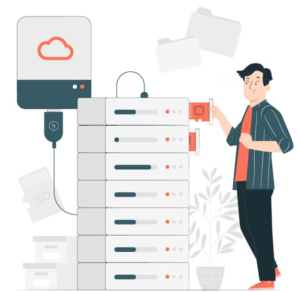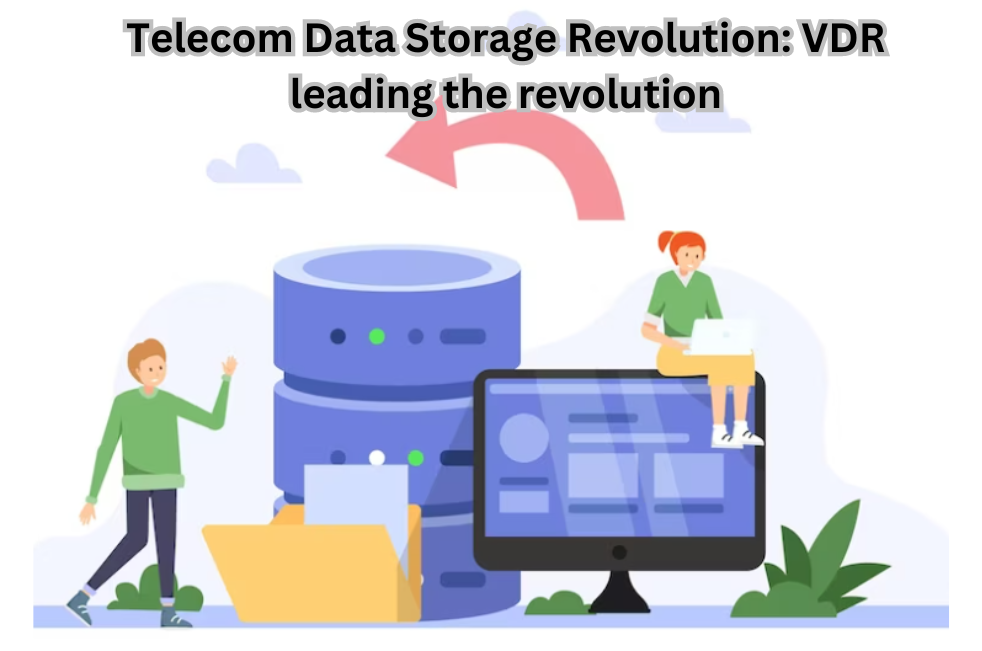Adequate data storage is crucial in the dynamic field of telecommunications. Introducing VDR leading the telecom data storage revolution is ushering in a change in how telecom businesses handle and safeguard their data. Click here

Realizing the Benefits of Virtual Data Rooms
Telecom data storage has been revolutionized thanks to the advent of leading the telecom data storage revolution) offer an alternative to the conventional ways of storing, exchanging, and managing massive volumes of data by providing a safe and centralized platform. The revolutionary aspect of these systems is their capacity for streamlined operations, heightened security, and responsiveness to the ever-changing demands of the telecom sector.
Transforming Characteristics of Telecom Data Storage
Security Reinvented: VDRs utilize cutting-edge encryption and multi-layered security procedures, guaranteeing that vital telecom data stays guarded from cyber attacks.
VDRs allow telecom experts to work together effectively in real-time, removing obstacles to communication and maximizing productivity.
Reduced Effort and Time Expenditures on Repeated Tasks VDR leading the telecom data storage revolution automate and optimize data management activities, including document indexing and due diligence.
VDRs’ malleability to change is especially useful in the telecom business, known for its fast-paced innovation. These systems are constantly improving to keep up with the latest technological innovations.
Advantages for Telecommunications Agencies:
Virtual data rooms (VDRs) offer extra protection for your data, which is especially useful when maintaining regulatory compliance by keeping critical information hidden.
Accessibility Anytime, Anywhere This feature allows telecom professionals to access data whenever needed, allowing for more streamlined international communication and decision-making.
VDR leading the telecom data storage revolution are economical alternatives to actual data rooms since they eliminate physical storage requirements.
Eco-Friendly Practices: By eliminating paper consumption and boosting digital processes, VDRs contribute to environmentally responsible practices.
Future Steps:
With the advent of the virtual data room (VDR), telecom businesses now have a fighting chance against their rivals. The convergence of cutting-edge technology and telecom data storage is redefining best practices and paving the way for revolutionary new developments and long-term prosperity.
Finally, virtual data rooms (VDRs) are at the forefront of a revolution in telecom data storage that represents more than simply a shift in technology but also a sea change in how telecom professionals view, handle, and protect their data. Telecommunications companies who join this movement will be in prime.
The telecom industry is constantly changing, and with it comes a radical shift in how data is stored and managed. Virtual data rooms (VDRs) have emerged as a revolutionary tool at the vanguard of this change. The storage procedures of telecom corporations have been fundamentally altered due to these advanced digital platforms.
The Data Revolution in Telecom: An Overview
Changes Over Time:
Telecom firms have battled vast volumes of sensitive data, demanding safe and structured storage solutions. Traditional approaches have drawbacks in scalability, accessibility, and security, such as on-premises servers and physical data rooms.
The Use of Virtual Data Rooms
A turning point occurred when VDRs first appeared on the scene. These cutting-edge virtual platforms offered a novel approach, one that went beyond the constraints of conventional data storage methods. Virtual data rooms usher in a new era of data storage defined by flexibility, security, and easy access.
The First Virtual Data Rooms for Telecommunications
Improved Safety:
One of the critical challenges in telecom data management is security. Robust encryption mechanisms, access restrictions, and many layers of security were developed for VDRs to meet this problem. These safeguards protect telecom firms’ data from hacking and other forms of cybercrime, making them more confident in their customers’ trust.
Seamless collaboration is critical in the telecommunications sector. Virtual data rooms facilitate this process by providing a single location for all parties to store, access, and collaborate on documents in real-time. Virtual data rooms (VDRs) improve collaboration on any document, whether it’s a project report, a regulatory filing, or a business strategy.

Solutions for Flexible Storage:
The days of lugging around stacks of files are over. Virtual data rooms (VDRs) provide scalable solutions, allowing telecom firms to dynamically grow or simplify storage needs. Cloud-based infrastructure guarantees adaptability, allowing quick alterations in response to changing data needs.
Conformity and Careful Examination:
Regulatory restrictions can be particularly onerous for the telecom industry. Virtual data rooms are beneficial for making audits, regulatory examinations, and related due diligence processes more accessible to carry out.
It’s undeniable that the success of Virtual Data Rooms is influencing the future of telecom data storage. VDRs are the cutting edge of data management because they can adapt to the changing demands of every business.
Telecom firms’ embrace of VDRs demonstrates their dedication to providing their customers with advanced, safe, and future-proof data storage options as they move forward on their digital transformation journeys.
Virtual data rooms (VDRs) lead the charge toward a future where telecom data storage is borderless, enables collaborative working, and provides the highest level of security possible.
Stay tuned for additional insights into how VDRs alter the telecom data storage market.
FAQ:
Virtual data rooms (VDRs) are changing how telecoms companies store, handle, and safeguard data, and you’re leading the way. Discover how virtual data rooms (VDRs) are improving telecom security, speed, and data storage efficiency. Check out these commonly asked questions regarding the virtual data room (VDR) technology that is changing telecom data management.
Q1: What is the complete form of VDR in telecom?
A1: VDR stands for Virtual Data Room in the telecom business. It’s a safe online database for keeping private information in.
Q2: What is a VDR provider?
Answer 2: A VDR provider is a business that provides Virtual Data Room services, such as a safe online space where parties may safely and effectively store, share, and collaborate on documents.
Q3: What are the benefits of virtual data rooms?
A3: Virtual Data Rooms offer increased security, effective collaboration, agile storage options, and streamlined compliance, transforming data management in the telecom business.
Q4: What is a data room due diligence?
With virtual data rooms (VDRs), businesses can do complete audits of their contracts, financial records, and other vital paperwork to ensure they are in line with applicable laws and regulations.
Q5: Where is VDR used?
Virtual data rooms (VDRs) are utilized not just in the M&A and due diligence processes but also in other industries, such as telecommunications, for securing the storage, sharing, and collaboration of sensitive data.
Q6: How does the VDR interface work?
Accessible and intuitive, VDR interfaces facilitate information sharing and collaboration among all parties involved. Commonly, they have user-friendly interfaces that make navigating and interacting a breeze.
Q7: What is the difference between VDR and S VDR?
Answer 7: Virtual Data Room (VDR) and Secure Virtual Data Room (S VDR) are two variations of the same concept. Protecting private data during business dealings or joint ventures is a top priority for S VDR.
Q8: What are data room services?
Answer 8: Virtual data room systems offer data room services such as data storage, document sharing, collaboration tools, and compliance features designed with the unique requirements of enterprises in mind.
Q9: How secure is a virtual data room?
To prevent unauthorized access and cyber risks, VDRs use security features such as encryption, access limits, and many layers of protection.

